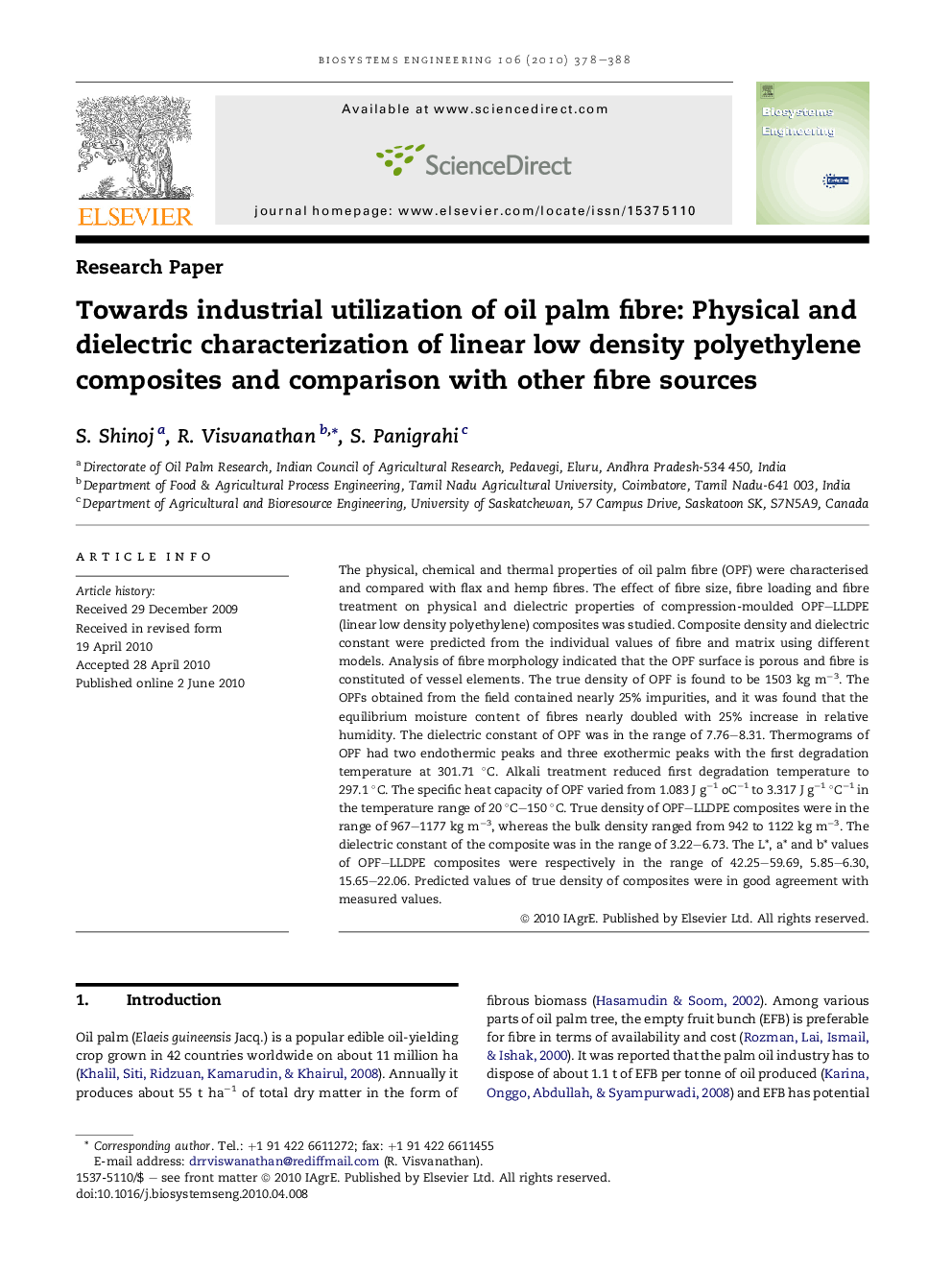| Article ID | Journal | Published Year | Pages | File Type |
|---|---|---|---|---|
| 1711756 | Biosystems Engineering | 2010 | 11 Pages |
The physical, chemical and thermal properties of oil palm fibre (OPF) were characterised and compared with flax and hemp fibres. The effect of fibre size, fibre loading and fibre treatment on physical and dielectric properties of compression-moulded OPF–LLDPE (linear low density polyethylene) composites was studied. Composite density and dielectric constant were predicted from the individual values of fibre and matrix using different models. Analysis of fibre morphology indicated that the OPF surface is porous and fibre is constituted of vessel elements. The true density of OPF is found to be 1503 kg m−3. The OPFs obtained from the field contained nearly 25% impurities, and it was found that the equilibrium moisture content of fibres nearly doubled with 25% increase in relative humidity. The dielectric constant of OPF was in the range of 7.76–8.31. Thermograms of OPF had two endothermic peaks and three exothermic peaks with the first degradation temperature at 301.71 °C. Alkali treatment reduced first degradation temperature to 297.1 °C. The specific heat capacity of OPF varied from 1.083 J g−1 oC−1 to 3.317 J g−1 °C−1 in the temperature range of 20 °C–150 °C. True density of OPF–LLDPE composites were in the range of 967–1177 kg m−3, whereas the bulk density ranged from 942 to 1122 kg m−3. The dielectric constant of the composite was in the range of 3.22–6.73. The L∗, a∗ and b∗ values of OPF–LLDPE composites were respectively in the range of 42.25–59.69, 5.85–6.30, 15.65–22.06. Predicted values of true density of composites were in good agreement with measured values.
